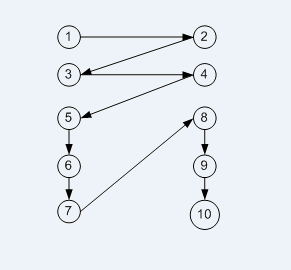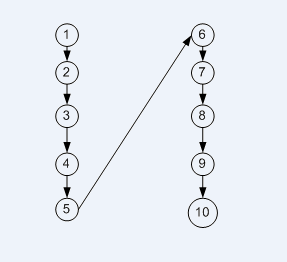Assessment Customizations
Payment Hierarchy
Payment Order and Priority
Requires Name Assessments module, and, for setting priorities, Batch Enhanced Payments (JULE Fund 1996) module. With these modules the user can establish priorities and hierarchies for which invoice elements and assessments to pay first when the Lessee makes a partial payment to an open invoice. The user sets these using the fields Pmt Order and Prty, available on the rental (principal) payment, the interest payment, and the individual assessments.
Setting payment order and priorities at the portfolio level provide the rules for payment application through U0415 Batch Payments, but serve as a default only in the interactive Payments [U0102] updates; in these, the user can override the defaults as needed. Payment order and priority have no effect if an invoice is paid in full.
Setting the Payment Order
- LeasePak pays items set to 0 last (after all other numbered items are paid), in the order they appear on the invoice. If an
invoice has the following items (in invoice order):
- Principal
- Interest
- Late Charges
- Legal Fees
- Other Fees
- Sales/Use Tax
and you have specified the following payment order:
- Principal (3)
- Interest (2)
- Late Charges (1)
- Legal Fees (0)
- Other Fees (0)
- Sales/Use Tax (4)
then LeasePak will apply the payment as follows:
- Late Charges
- Interest
- Principal
- Sales/Use Tax
- Legal Fees
- Other Fees
- You cannot assign payment order numbers to: Recurring Charges, Vendor Receivable, Security Deposit, Interim Rent, or Down Payment. LeasePak always treats these as payment order 0.
- Payment order assignments must be sequential. For example, using numbers 1, 2, 3, 4, 5 is correct, while using numbers 1, 2, 5, 7, 8 is not. LeasePak returns the error "Assessment payment order is out of sequence" if you skip a number.
- If you wish to assign a payment order number to Sales/Use Tax, it must be the last number in the sequence (see example above).
Setting Priorities
- The Priority (Prty or PRTY) field, available on the rental (principal) payment, the interest payment, the individual assessments, and the recurring charges, provides another level of payment application hierarchy. When the user sets items to 'Y', those items are paid first according to their relative hierarchy, followed by items set to 'N' according to their relative hierarchy. LeasePak processes payment instructions in the following order:
- Priority 'Y'
- Payment Order Hierarchy
- Priority 'N'
- Payment Order Hierarchy
- Remaining Items (Priority 'N' and Payment Order 0)
- Invoice Order
- LeasePak treats initial invoice receivables, such as Security Deposit and Down Payment, as though they were Priority 'Y', Payment Order 0.
Example
In the following is an example on how customer payments apply using the payment hierarchy settings defined using this update.
All methods discussed in the following are applicable for leases only.
Assessment Customization Settings
Category |
Pmt. Order |
Priority |
Rental |
1 |
N |
Interest |
2 |
N |
Sales Tax |
3 |
Y |
Collections |
4 |
N |
Rewrite |
5 |
Y |
Lease 137 |
Start Date (03/13/2007) |
To Date (04/13/2007) |
Principle/Payment |
$250 |
$20 |
Interest |
$100 |
$100 |
Sales Tax |
$30 |
$30 |
Collections |
$10 |
$10 |
Rewrite |
$5 |
$5 |
Lease 138 |
Start Date (03/13/2007) |
To Date (04/13/2007) |
Principle/Payment |
$150 |
$150 |
Interest |
$75 |
$75 |
Sales Tax |
$10 |
$10 |
Collections |
$7 |
$7 |
Rewrite |
$2 |
$2 |
Lease 139 |
Start Date (03/13/2007) |
To Date (04/13/2007) |
Principle/Payment |
$110 |
$110 |
Interest |
$85 |
$85 |
Sales Tax |
$45 |
$45 |
Collections |
$8 |
$8 |
Rewrite |
$1 |
$1 |
Payment Hierarchy - Method A
With this method the payment amount will default to each of the individual invoice line items using the following flow:
Assessment Type |
Order |
Priority |
03/13/2007 |
04/13/2007 |
 |
Sales Tax |
3 |
Y |
1 |
3 |
|
Rewrite |
5 |
Y |
2 |
4 |
|
Principle/Payment |
1 |
N |
5 |
8 |
|
Interest |
2 |
N |
6 |
9 |
|
Collections |
4 |
N |
7 |
10 |
Payment Example
Line Item |
Amount |
Due Date |
Lease No. |
Sales Tax |
$30 |
03/13/2007 |
137 |
$10 |
03/13/2007 |
138 |
|
$45 |
03/13/2007 |
139 |
|
Rewrite |
$5 |
03/13/2007 |
137 |
$2 |
03/13/2007 |
138 |
|
$1 |
03/13/2007 |
139 |
|
Sales Tax |
$30 |
04/13/2007 |
137 |
$10 |
04/13/2007 |
138 |
|
$45 |
04/13/2007 |
139 |
|
Rewrite |
$5 |
04/13/2007 |
137 |
$2 |
04/13/2007 |
138 |
|
$1 |
04/13/2007 |
139 |
|
Principle/Payment |
$250 |
03/13/2007 |
137 |
$150 |
03/13/2007 |
138 |
|
$110 |
03/13/2007 |
139 |
|
Interest |
$100 |
03/13/2007 |
137 |
$75 |
03/13/2007 |
138 |
|
$85 |
03/13/2007 |
139 |
|
Collections |
$10 |
03/13/2007 |
137 |
$7 |
03/13/2007 |
138 |
|
$8 |
03/13/2007 |
139 |
|
Principle/Payment |
$250 |
04/13/2007 |
137 |
$150 |
04/13/2007 |
138 |
|
$110 |
04/13/2007 |
139 |
|
Interest |
$100 |
04/13/2007 |
137 |
$75 |
04/13/2007 |
138 |
|
$85 |
04/13/2007 |
139 |
|
Collections |
$10 |
04/13/2007 |
137 |
$7 |
04/13/2007 |
138 |
|
$8 |
04/13/2007 |
139 |
Payment Hierarchy - Method B
With this method the payment amount will default to each of the individual invoice line items using the following flow:
Assessment Type |
Order |
Priority |
03/13/2007 |
04/13/2007 |
 |
Sales Tax |
3 |
Y |
1 |
2 |
|
Rewrite |
5 |
Y |
3 |
4 |
|
Principle/Payment |
1 |
N |
5 |
8 |
|
Interest |
2 |
N |
6 |
9 |
|
Collections |
4 |
N |
7 |
10 |
Payment Example
Line Item |
Amount |
Due Date |
Lease No. |
Sales Tax |
$30 |
03/13/2007 |
137 |
$10 |
03/13/2007 |
138 |
|
$45 |
03/13/2007 |
139 |
|
$30 |
04/13/2007 |
137 |
|
$10 |
04/13/2007 |
138 |
|
$45 |
04/13/2007 |
139 |
|
Rewrite |
$5 |
03/13/2007 |
137 |
$2 |
03/13/2007 |
138 |
|
$1 |
03/13/2007 |
139 |
|
$5 |
04/13/2007 |
137 |
|
$2 |
04/13/2007 |
138 |
|
$1 |
04/13/2007 |
139 |
|
Principle/Payment |
$250 |
03/13/2007 |
137 |
$150 |
03/13/2007 |
138 |
|
$110 |
03/13/2007 |
139 |
|
Interest |
$100 |
03/13/2007 |
137 |
$75 |
03/13/2007 |
138 |
|
$85 |
03/13/2007 |
139 |
|
Collections |
$10 |
03/13/2007 |
137 |
$7 |
03/13/2007 |
138 |
|
$8 |
03/13/2007 |
139 |
|
Principle/Payment |
$250 |
04/13/2007 |
137 |
$150 |
04/13/2007 |
138 |
|
$110 |
04/13/2007 |
139 |
|
Interest |
$100 |
04/13/2007 |
137 |
$75 |
04/13/2007 |
138 |
|
$85 |
04/13/2007 |
139 |
|
Collections |
$10 |
04/13/2007 |
137 |
$7 |
04/13/2007 |
138 |
|
$8 |
04/13/2007 |
139 |
Payment Hierarchy - Method N
The payment priority is not applicable here. With the ‘N’ method the payment amount will default using the following flow:
Assessment Type |
Order |
Priority |
03/13/2007 |
04/13/2007 |
 |
Sales Tax |
3 |
Y |
1 |
2 |
|
Rewrite |
5 |
Y |
3 |
4 |
|
Principle/Payment |
1 |
N |
5 |
8 |
|
Interest |
2 |
N |
6 |
9 |
|
Collections |
4 |
N |
7 |
10 |
Payment Example
Line Item |
Amount |
Due Date |
Lease No. |
Principle/Payment |
$250 |
03/13/2007 |
137 |
$150 |
03/13/2007 |
138 |
|
$110 |
03/13/2007 |
139 |
|
Interest |
$100 |
03/13/2007 |
137 |
$75 |
03/13/2007 |
138 |
|
$85 |
03/13/2007 |
139 |
|
Sales Tax |
$30 |
03/13/2007 |
137 |
$10 |
03/13/2007 |
138 |
|
$45 |
03/13/2007 |
139 |
|
Collections |
$10 |
03/13/2007 |
137 |
$7 |
03/13/2007 |
138 |
|
$8 |
03/13/2007 |
139 |
|
Rewrite |
$5 |
03/13/2007 |
137 |
$2 |
03/13/2007 |
138 |
|
$1 |
03/13/2007 |
139 |
|
Principle/Payment |
$250 |
04/13/2007 |
137 |
$150 |
04/13/2007 |
138 |
|
$110 |
04/13/2007 |
139 |
|
Interest |
$100 |
04/13/2007 |
137 |
$75 |
04/13/2007 |
138 |
|
$85 |
04/13/2007 |
139 |
|
Sales Tax |
$30 |
04/13/2007 |
137 |
$10 |
04/13/2007 |
138 |
|
$45 |
04/13/2007 |
139 |
|
Collections |
$10 |
04/13/2007 |
137 |
$7 |
04/13/2007 |
138 |
|
$8 |
04/13/2007 |
139 |
|
Rewrite |
$5 |
04/13/2007 |
137 |
$2 |
04/13/2007 |
138 |
|
$1 |
04/13/2007 |
139 |


